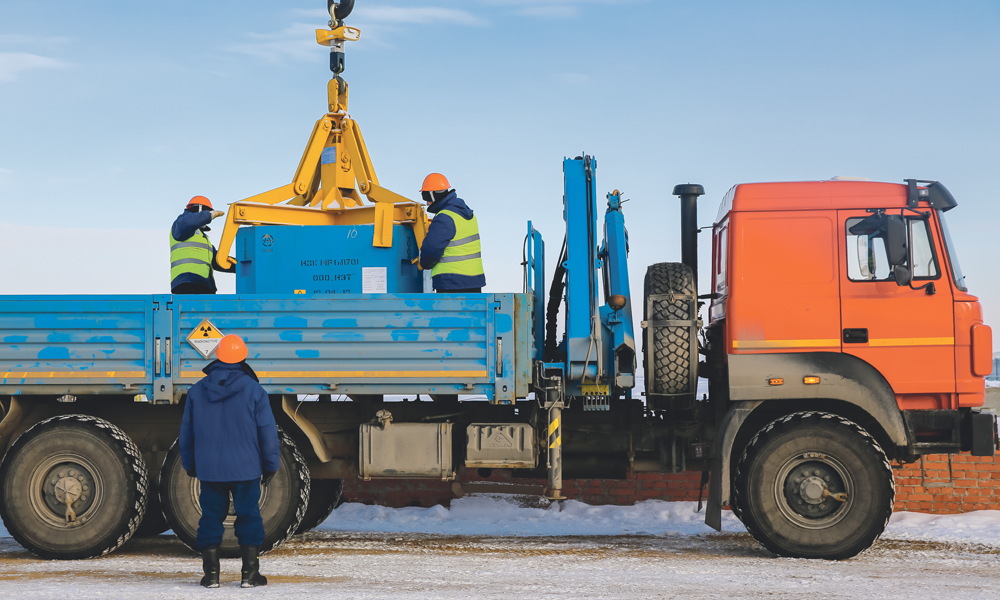
NSDF Meets International Standards
back to contentsThe first 13 containers with 47 cubic meters of Class 3 radioactive waste were placed into the near-surface disposal facility (NSDF) for storage. The operation lasted from 28 November till 2 December. NSDF is a reinforced concrete structure with 2 meter thick and 7 meter high concrete walls, lying at the depth of about 10 meters. The inner space of the 140 meter long facility is divided into cells. Its stress-resistant reinforced concrete foundation rests on an adsorption barrier made of specific clay to prevent radiation migration. Packed in steel drums and enclosed in a 15 centimeter thick concrete container, Class 3 and 4 (low level) wastes are placed into the cells inside the facility. When filled, NSDF will be concreted. It is designed to store 15 thousand cubic meters and will annually receive about one thousand cubic meters of radioactive waste.
Return to greenfield
After the storage facility is full, the site will be returned to greenfield status. The facility will be concreted on top and covered with absorption clay and a membrane followed by a soil layer, alternating until the site turns into greenfield.
“To see how it looks like, one should visit a ‘green field’ on the French coast of the North Sea. Of course, it is not for camouflaging the site from aircrafts flying over. But even a plane crash will not damage the thick concrete encasement of the repository. I should also mention that Class 3 and 4 wastes have low radiation levels and little environmental impact. The multilayer design also improves safety – radioactive waste is placed into a steel drum, then a special container and a cell, all concreted inside a concrete structure. In other words, the design has great safety margins. Since this is a pioneer project for Russia, Rosatom is well aware of responsibility it takes. Do you know how much hue and cry was raised on the media by local environmentalists? But there was absolutely no reason for that. We are going to keep waste there for 300, not 30 years. Safety calculations were performed by the Nuclear Safety Institute with the Russian Academy of Sciences, our Expert Certification Centre, and Gidrospetsgeologiya – all of them were trying to predict what will happen to concrete structures in 300 years. To be honest, we invested great effort into the project because it is just the first out of many. We need such storage facilities to be built all over Russia. We have nuclear weapons sites that can be neither shut down as were German nuclear stations nor built up with shopping malls or promenades. This is our legacy, and we have to keep working to solve the problem because the Urals Electrochemical Plant has been operating and accumulating waste since the 1950s. The most important task is to make it clean,” explains Mikhail Rylov, Director of the Saint Petersburg Expert Certification Center for Nuclear Safety.
Approved by IAEA
The near-surface disposal facility (NSDF) meets all the Russian and IAEA safety standards. Yuri Raptanov, Director of Podorozhnik Russian Environmental Organization, says, “The disposal facility built by Rosatom is unparalleled in terms of safety. I think the company was driven by public opinion. Although Class 3 and 4 wastes are low radioactive wastes, safety measures – high capacity concrete walls and multilayer structures with a 300-year design life – are unprecedented both under Russian and international standards. It is not the first time Rosatom takes responsibility for the Soviet legacy. Let it not be the last! The project opens a new chapter for the industry. As Rosatom CEO Alexei Likhachov said, “now we make long-term plans and never postpone solutions.” It is very important that environmental and radiation safety remains Rosatom’s key priority.




